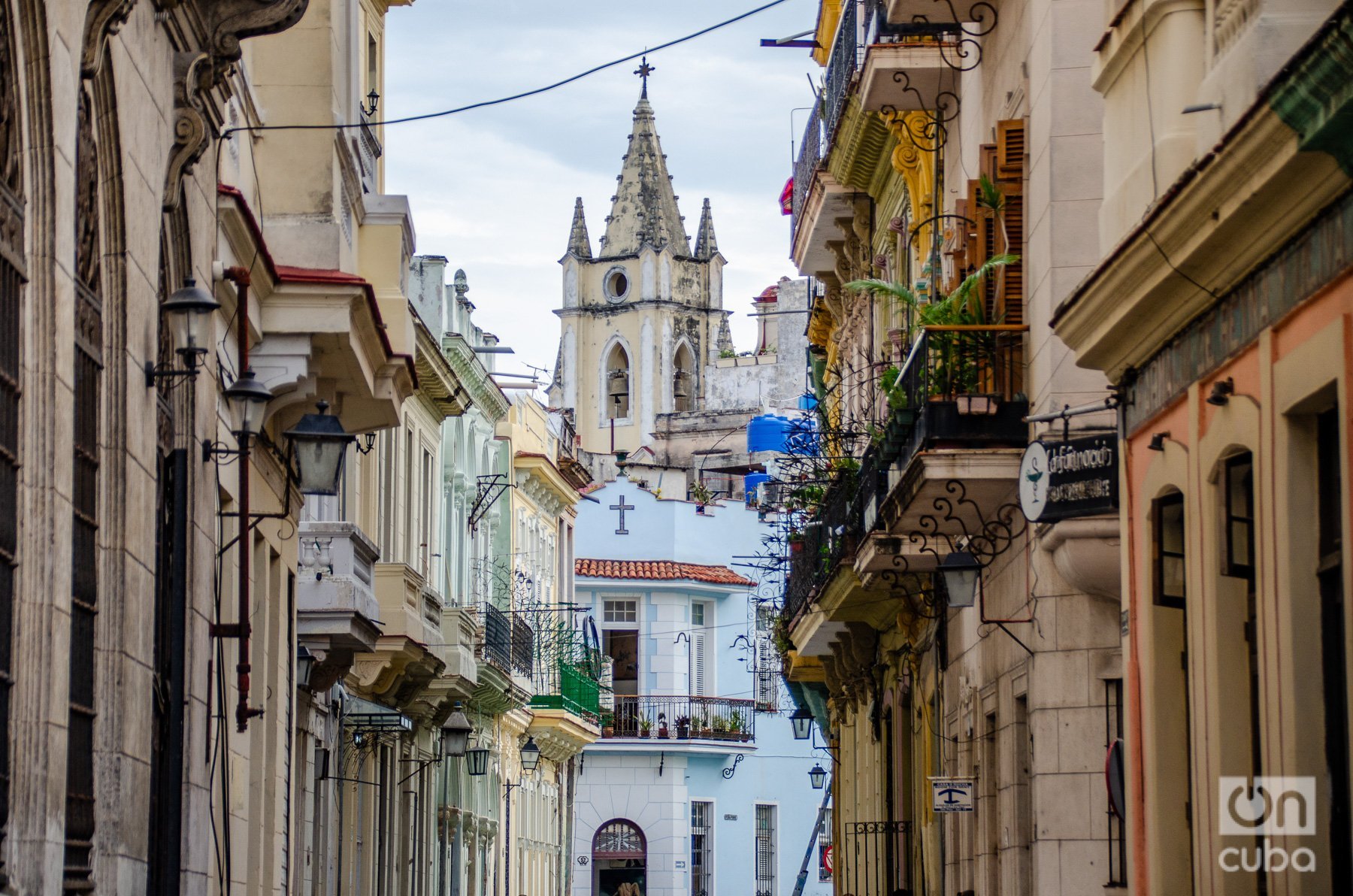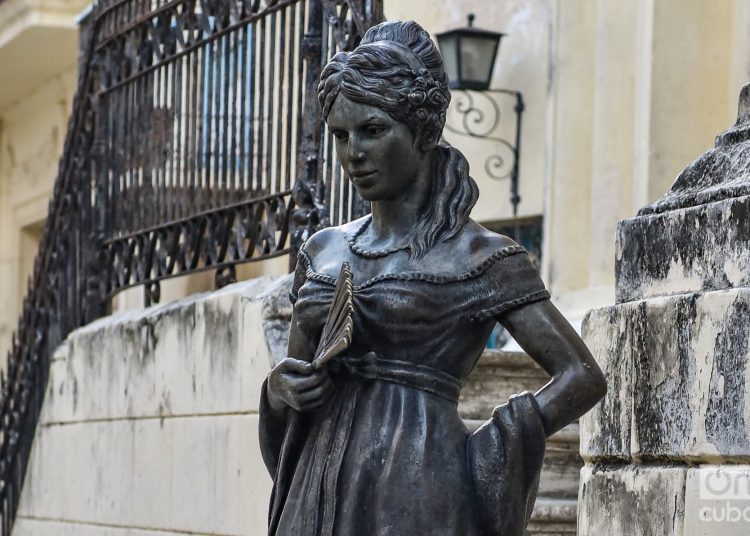I hurried around the corner, texting that I would be a few minutes late. Without taking my eyes off the screen, I noticed the silhouette of a figure almost next to me, and I stopped dead. I looked up and saw that I almost hit the sculpture of Cecilia Valdés, the beautiful protagonist of one of the upholders of Cuban literature, the homonymous novel written in 1882 by Cirilo Villaverde (1812-1894).

Located meters from the main entrance of the Santo Ángel Custodio church, on Compostela Street, Old Havana, Cecilia seems to walk slowly and with a distressed expression.
I have passed by here several times. Always passing through, I have ascended Cuarteles Street or the aforementioned Compostela to Loma del Ángel, as the small mound on which the neo-Gothic style church was built in 1695 is known. Of course, I have come across the sculpted Cecilia Valdés by the young Cuban artist Erig Rebull and inaugurated in 2014 for the bicentennial (two years before) of Villaverde.
However, if it had not been for the fact that I almost collided with it, I would not have stopped to appreciate the outlined lines that shaped the physiognomy of the work of art.

Cecilia Valdés or La Loma del Ángel, the full title of the book, is not only the story of a tragic love, but also a critical portrait of Cuban society in the first half of the 19th century, marked by slavery and racial tensions.
In the plot, Cecilia is a young mestiza, daughter of a mulatto woman and a Spaniard, who lives in the turbulent context of colonial Cuba. Her beauty and grace dazzle everyone, including Leonardo Gamboa, a young white man of good standing. The love story between them (incestuous, moreover, since they are brothers on their father’s side) is tainted by racial and social prejudices and is doomed from the beginning to a tragic end.

In its immutable silence, the sculpture seems to whisper the secrets and passions contained in the novel. Rebull managed to capture the essence of the character masterfully. The statue is so natural that the limits between the 18 parts painstakingly welded to form the final piece go unnoticed. The delicate details of Cecilia’s face are surprising, the subtle expression of sadness in her eyes, the loose dress that drags on the floor, the hairstyle and the grace of her posture with a fan…
“Her likeness evoked the virgins portrayed by the most famous painters,” can be read about the young mulatto girl in the second chapter of the novel.
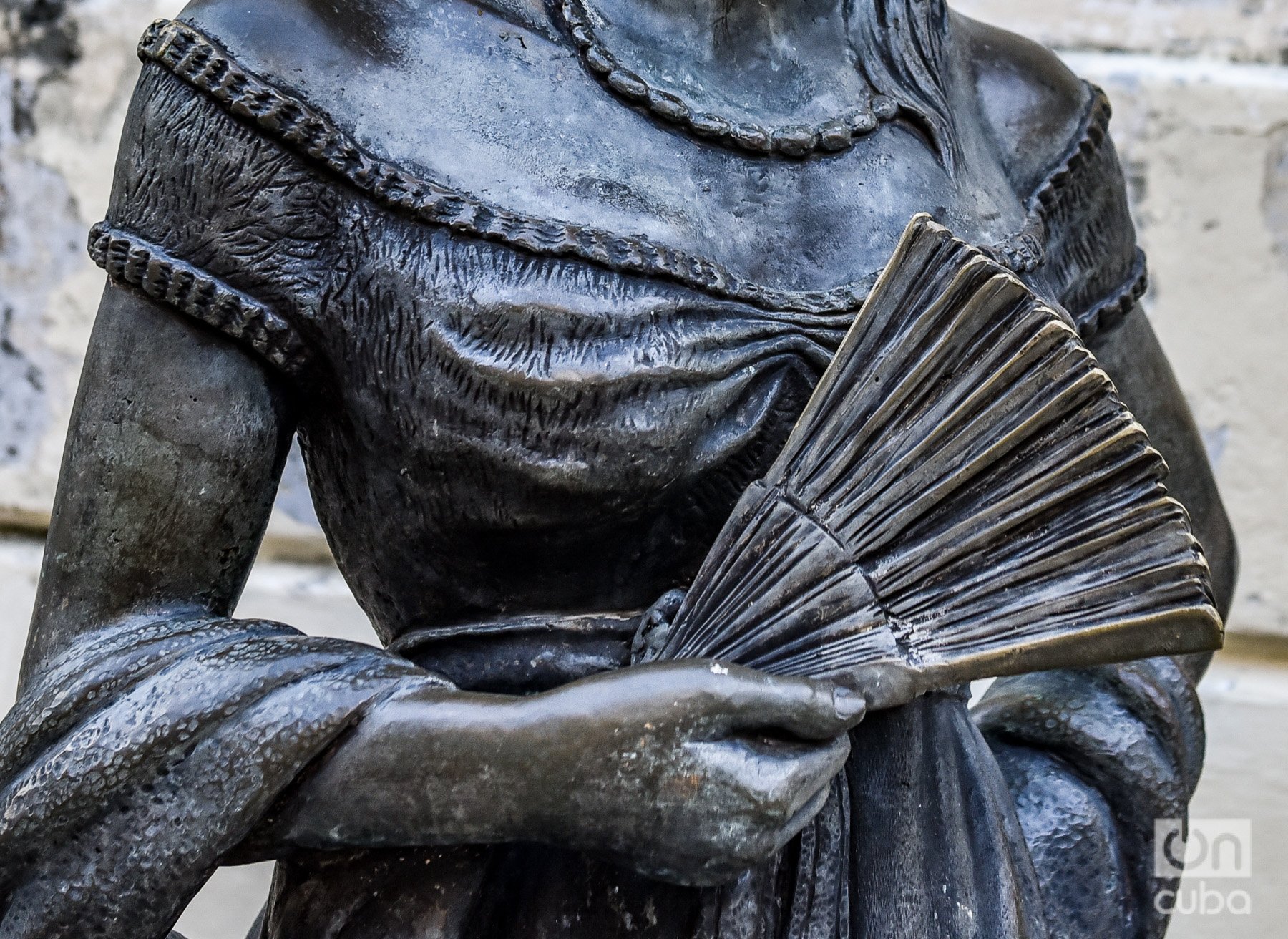
The sculptural work also contains something of the artist’s love and pain. In the middle of the creation process, Erig Rebull’s girlfriend, Gisell Fundora, died at only 32 years old. She had been the inspiring muse and model to give shape to the Cecilia in bronze.
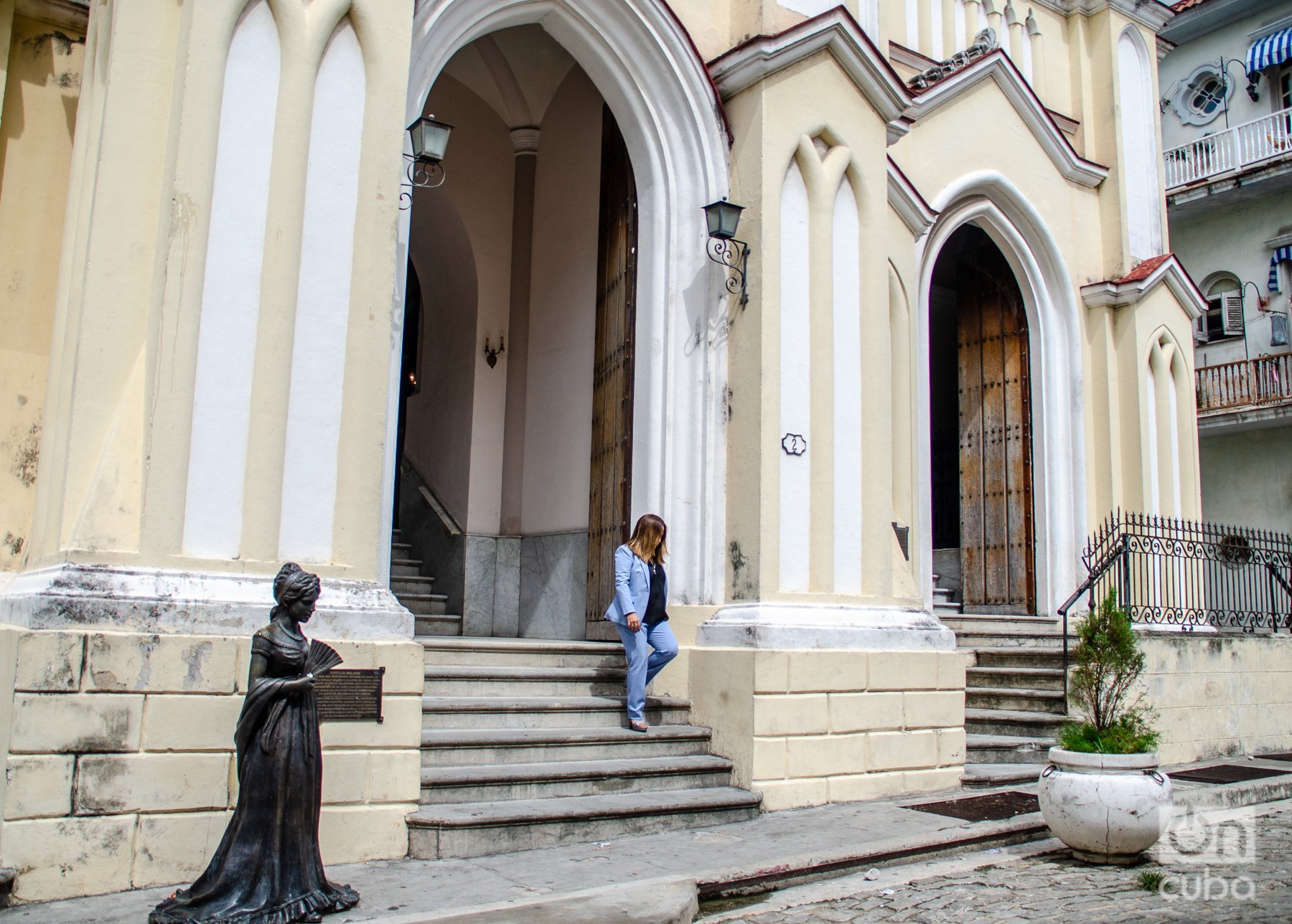
Cecilia Valdés de la Loma del Ángel comes to life in her everyday environment. Its location coincides with the geographical point where the final outcome and the saddest scene of the novel takes place: Leonardo’s murder (sorry for the spoiler).
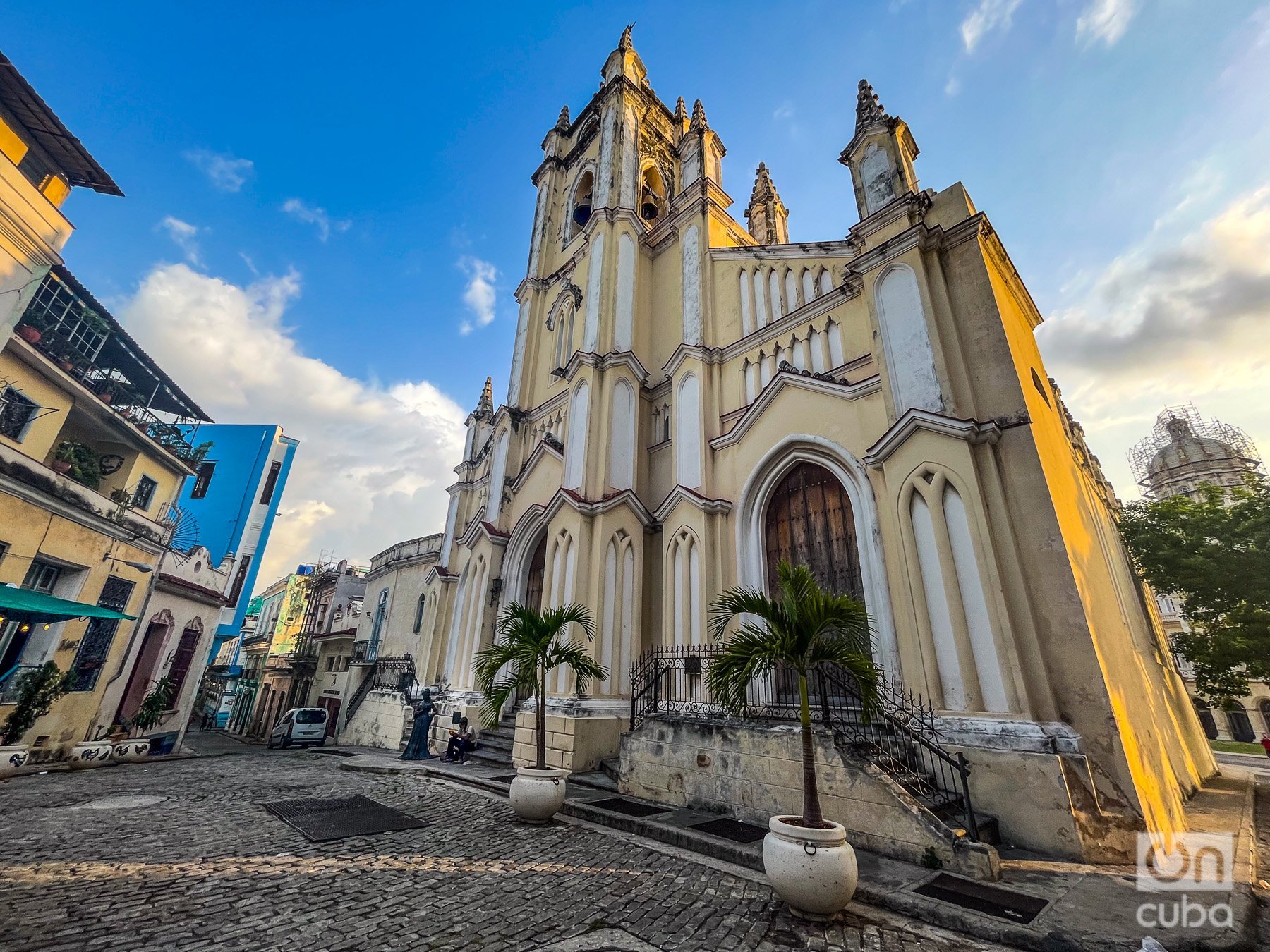
It was the idea of Eusebio Leal, the Havana historian, who had the vision of giving life to Cecilia Valdés through sculpture, paying tribute to Cuban literature. The initiative adds to the tribute that Cirilo Villaverde received in this same place in 1946, when a plaque was unveiled in his honor.


Almost as I leave, I pan my camera around the square and its surroundings. I open the angle to explore its buildings with historic facades, balconies adorned with vines and large windows that seem to bear witness to the passing of time. In this peaceful corner of the city, pedestrians are scarce.

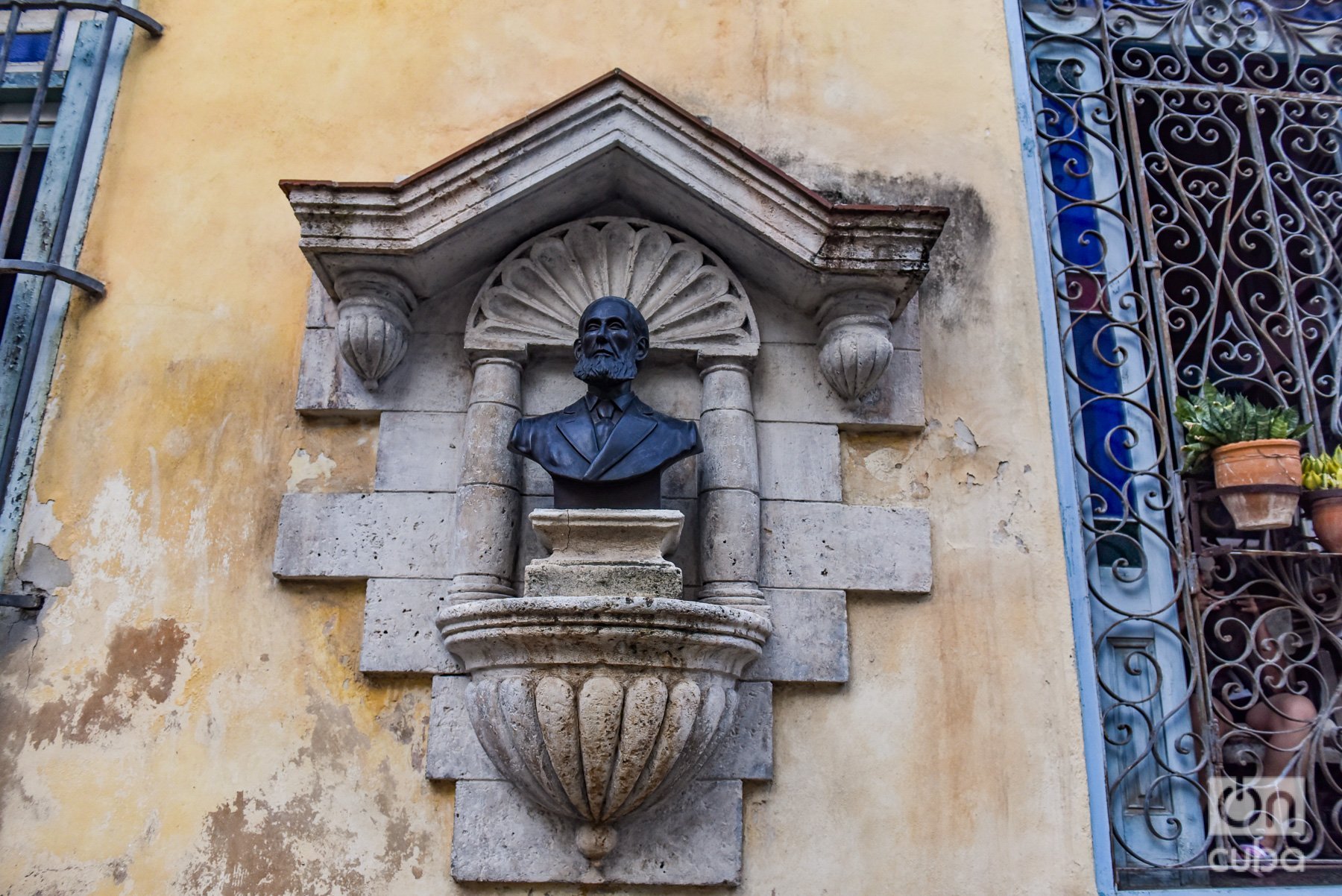
In the midst of the serenity, a figure appears that stands out in the surroundings. She is a girl who seems to have emerged from the pages of a novel. She evokes Cecilia, “the Cuban woman who carries in her indomitable heart all the fierceness and hope of Cuba, and in her eyes, all the fire,” as José Martí (who was baptized by the way in the Santo Ángel Custodio church) wrote. He published this in the edition of the newspaper Patria on October 30, 1894, just days after the death of his compatriot Cirilo Villaverde, in New York, where the novel was published for the first time and where both writers shared exile.
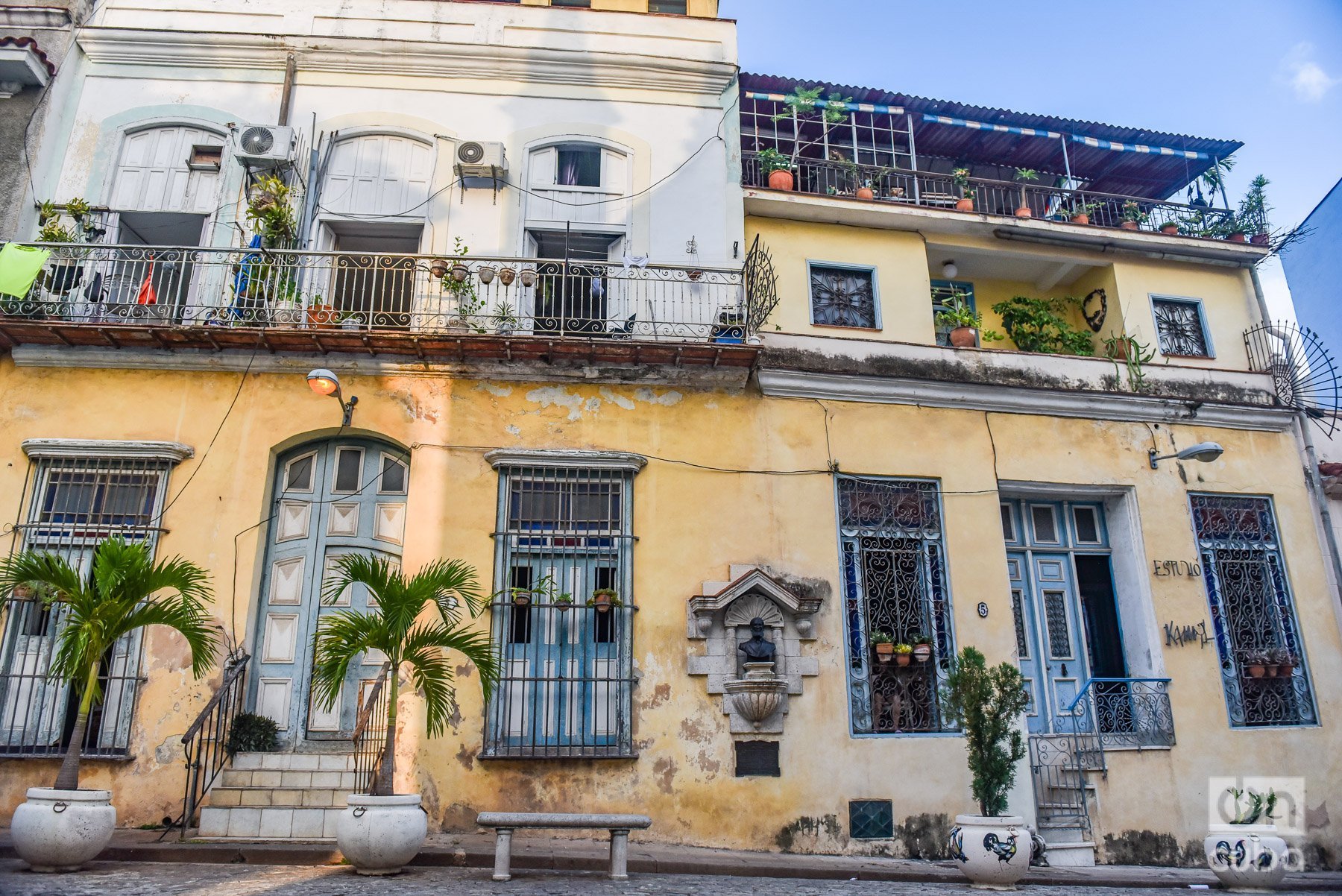
The warm and soft light of the afternoon, which filters through Cuarteles Street, illuminates her face with a heavenly grace of that young woman. My mind wanders, and for a moment I wonder if Cecilia Valdés’ sculpture has come to life to walk among us.
Inspired by the moment, I decide to approach the young woman and ask her to let me photograph her. She accepts with a kind smile and poses with a naturalness that shows her innate elegance.

I prefer not to inquire about the name or history of my subject. I like the idea of carrying with me the fantasy that, in some corner of Loma del Ángel, Cecilia Valdés still walks, spreading grace and charm in the heart of Old Havana.
